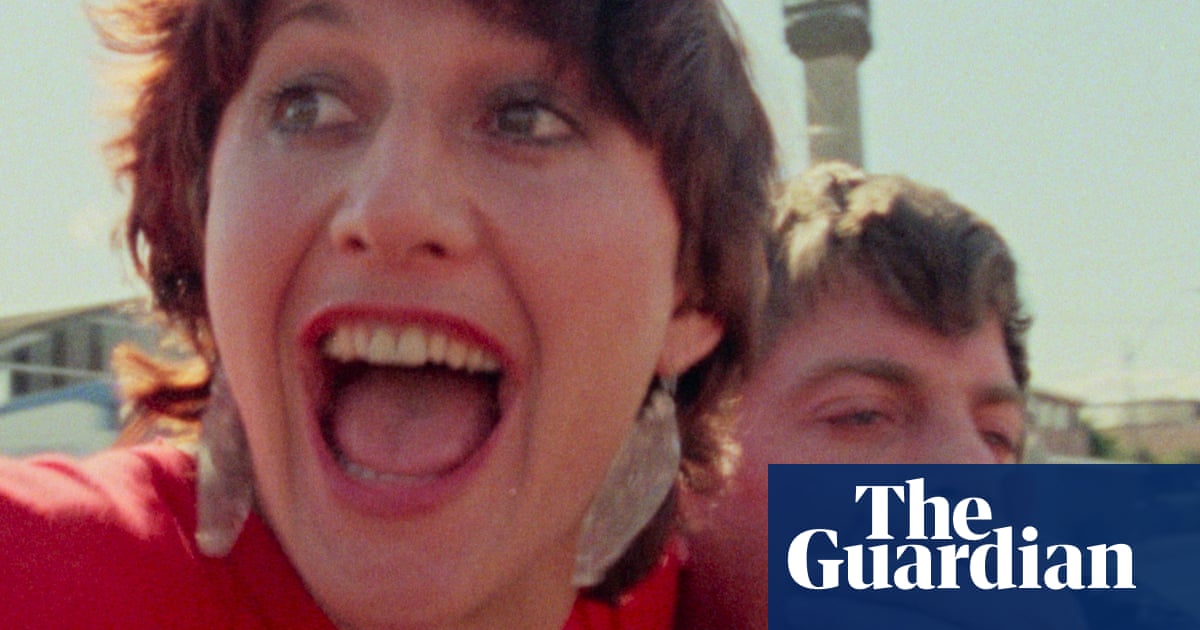When Going Down first screened at Sundance film festival in 1986, American audiences “were so used to kangaroos and slow pans across the wide brown land”, says director Haydn Keenan. Today, the under-seen film is being redistributed by maverick movie maven Elizabeth Purchell. To this day, Purchell says, “most American cinephiles, if they know anything about Australian cinema, it’s either the art house stuff like Picnic at Hanging Rock, or it’sOzploitation, like Razorback, BMX Bandits, The Man from Hong Kong – but not films like this.”
Going Down is a rich descent into life in 1980sSydney, following Karli, Jane, Jackie and Ellen on their last night out on the town together before Karli (Tracy Mann) takes off to New York the next morning. As it opens on an all too recognisable Sydney sharehouse in shambles, it is clear things have been going down for quite some time. What follows is a well-oiled portrait of sin city, devoted to the sensuous character of the former Kings Cross. The four girlfriends – two of whom also have writing credits for Going Down – sink into the night, plundering house parties and eventually becoming embroiled in what one of them calls the “most mundane crime of the century”.
More than 40 years on, the film is a remarkable certificate of Sydney’s past life. In fact, Going Down was the first on-screen appearance of Australian actor Claudia Karvan, who shows up early in the film as a child playing on the street late at night with her real-life best-friend, the late Samantha Rebillet. The two girls form an unhappy family with Michael (Esben Storm) and Jane (Vera Plevnik) who masquerade as the girls’ parents, deceiving a pharmacist for six bottles of Paracodin and Mandrax.
Sign up for the fun stuff with our rundown of must-reads, pop culture and tips for the weekend, every Saturday morning
“I was only like 10 years old,” Karvan recalls. “I’d never acted before. I just looked straight down the barrel.” She isn’t sure that “Mum was particularly enamoured with me doing [the film]” due to its adult subject matter – which also “meant that I couldn’t actually go and see the movie myself, because I was too young”.
The film takes many exciting turns, including one remarkable U-ey in the middle of the Sydney Harbour Bridge. “We negotiated for three months, and they shut the bridge for 30 minutes,” Keenan remembers. “You didn’t have to pay. A cameraman just climbed over the barbed wire and up into the girders to shoot. I thinkRyan [Gosling]spent $5m getting the same little stunt.”
This was a Sydney where “you could talk your way into places”, Keenan says, and plenty has changed since he made his film: he recalls one audience member being astonished by the ample parking available in the city. As Karvan puts it, “You don’t really notice the shifting of time that much until you throw it into relief over 40 years and suddenly things you took for granted are extremely bizarre.”
And nothing could be more bizarre than watching a pair of bickering newlyweds from Broken Hill park their Commodore in the heart of Sydney, outside theEl Alamein ‘dandelion’ water fountainon Macleay St – a vehicle Karli claims as her own, driving off to the airport.
Going Down,a fiercely independent production,isa blinding contrast to recent, sleek Hollywood films set in Sydney, such asThe Fall GuyandAnyone But You. “We started the film with enough money to pay the wages for the first week,” Keenan says. “We didn’t have enough lights to light night exteriors.”
And while it may show sometimes – the director affectionately calls it a “rough little picture” – the new 4K restoration has brought Going Down into sharp focus.
Keenan’s film has been salvaged by a series of crucial contributors. The Grainery, a restoration facility in Canberra, scanned negatives for the cost of electricity; Josh Pomeranz – Margaret Pomeranz’s son – worked on the sound mix and colour grading after-hours at Spectrum Films.
Sign up toSaved for Later
Catch up on the fun stuff with Guardian Australia's culture and lifestyle rundown of pop culture, trends and tips
after newsletter promotion
After Going Down actor Vera Plevnik died in an accident before the shoot wrapped, her friend, Australian Crawl’s James Reyne, donated his songs for use in the film. “It gradually built up a maelstrom of cultural creativity. People started throwing things in,” Keenan says.
A twist of fate also brought Keenan and Purchell together. “When I reached out to [Keenan], he was in … the final steps of the restoration,” she says. Purchell was about to launch her cult distribution company Muscle Distribution; the pair shared a DIY spirit. “It was just right time, right place,” she says.
In the film, Jane is accused of resenting Karli for leaving her behind in provincial Sydney. When Jane argues that Karli can do “anything she wants here”, it feels like wishful thinking rather than a guarantee. “Part of it is cultural cringe. We need validation, we need to go out,” Keenan says – which is certainly true for Australians working in the film industry. But more broadly, he senses an “unease” that exists in non-Indigenous Australians, “a subconscious sense that we are strangers in a strange land, that we don’t quite fit”.
Going Down, too, is a strange film: proudly outré and gloriously coarse. (Pay close attention to the final gag, involving an appearance from Keenan himself, some egg yolks and a bucket of sesame bars.) Much like its main character, Going Down will soon take flight to the US. Let’s hope it’s not a one-way trip.
Going Down screens atBam, New Yorkfrom 9 to 15 May before showing around the US and Canada until June
